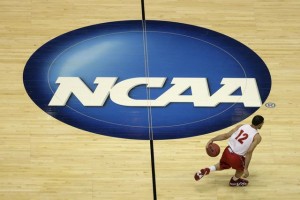No one-stipend-fits-all solution for NCAA
Congress will hold hearings this week on the Northwestern football union case, promising more rampant examples of “college sports” being misused as a one-size-fits-all label.
Actually, the term is equivalent to “professional baseball,” grossly inadequate as a general description.
Sure, young minor leaguers have plenty in common with their major-league counterparts. Except for the charter flights, luxury hotels and roughly $100 per diem. Likewise, student-athletes at the University of Wisconsin-Whitewater easily relate to their counterparts at the University of Wisconsin-Madison. Except for the super-sized athletic budget, enhanced facilities and plusher accommodations.
The disparities within college sports are numerous and enormous in Division I alone, which has 65 power-conference schools and another 218 schools in lower income brackets. The differences grow exponentially when you include Divisions II and III, the majority of 1,100 schools under the NCAA’s umbrella.
There’s no fair way to lump them all together or treat them all the same, not when Texas can spend $1.3 million on its cheerleaders and spirit squad (as it did in 2012-13), while the entire travel budget for Troy’s athletic department was $1.2 million.
However, that cavernous gulf between those realities is just one inequality among dozens that cloud the debate on paying student-athletes.
Should small schools with athletic departments awash in red ink be compared to an Ohio State or Florida? Doesn’t seem right. Should swimmers and hurdlers receive the same paychecks as point guards and halfbacks? They all put in work and make sacrifices.
For that matter, should the star quarterback and the third-stringer have parity in pay? That’s arguably un-American.
The NCAA loves us to consider the hardships smaller schools would face under pay-for-play models. The smokescreen worked on me for quite some time. I found it unfair to act like schools were on the same level. And it certainly wasn’t fair to pick and choose which athletes were paid based on their sport (revenue vs. nonrevenue), their status (star or sub) or their school (have or have-not).
But now I see the error of my ways. There never was a reason to lump all 1,100 schools together and worry how the barrel scrapers will pay their athletes, or wonder if the money would run out after football and basketball players got their cut.
Let the free market dictate the schools’ operations and have the NCAA – which enjoys $16 billion in TV contracts – foot the bill for athletes. No one cares if the pig gives up a few extra slabs so that others might eat.
Most athletic departments and 21 of the NCAA’s 23 sports are dependable money-losers. So use the NCAA’s coffers to grant stipends (sounds better than a payment). Problem solved!
Unlike most of their fellow students, athletes often don’t have the option of getting part-time jobs. Their sport fills that role, a form of work-study that doesn’t put a dime in their pocket whether they’re on scholarship or they walked on.
But whatever option is chosen – stipend or no stipend, every sport or select sports, flat rates or performance-based scales – let’s all agree that a fair solution is virtually impossible. Because the vast majority of schools put as much money in the NCAA’s account as Single-A teams put in Major League Baseball’s account. None.
You can still prefer that every student-athlete gets a slice of the pie. But you must acknowledge that small forwards at Drake aren’t exploited in quite the same manner as small forwards at Duke. You must admit that star wideouts at Alcorn and star wideouts at Auburn aren’t taken advantage of in similar fashion.
The NCAA claims that more than 90 percent of its revenue goes back to member schools. That’s great. But it also wants us to look at college sports as a single entity, which is laughable during March Madness and bowl season, when the power-conference members fuel nine-figure paychecks for the organization.
Clearly, the athletes most responsible for generating that loot are getting a raw deal. What that should mean for everyone else isn’t as obvious.
Do the long hours, missed classes and empty pockets for athletes in Divisions II and III – and the lower echelons of Division I – justify compensation as well? Or does there have to be financial gain on someone’s part to consider those athletes victims.
Whatever is decided, “college sports” should no longer be used to describe the subject matter. There’s big-time, followed by everything else. Just like baseball, the NCAA has its major leagues, Triple-A, Double-A, etc.
The sooner it quits painting college sports like a farm operation, the sooner we can develop solutions. Just don’t expect them to be easy. Or fair.
 Follow
Follow

